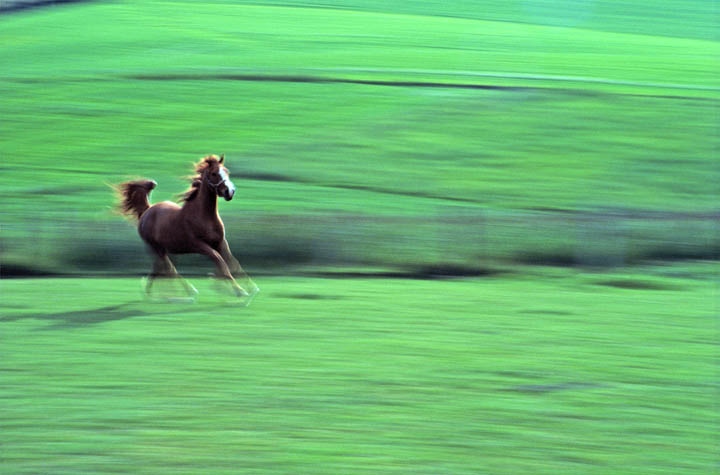
Confirmed VS spreads to more counties in New Mexico, other counties under watch
New cases of Vesicular Stomatitus in horses have cropped up in New Mexico.New Mexico animal health officials say they are heightening safeguards to prevent the disease from spreading further.Effective immediately New Mexico officials are requiring a written health certificate (CVI) for all New Mexico livestock, including cattle and horses, that travel to public events including roping, racing, breeding, and other forms of public exhibition where out of state livestock are a part of the event.

After two New Mexico horse were confirmed as suffering from Vesicular Stomatitus last month in Otero County, an undisclosed number of new cases have cropped up, and New Mexico animal health officials say they are heightening safeguards to prevent the disease from spreading further.
Eleven premises spread across six counties are under quarantine now and two additional counties are “under watch” this week after new cases of VS were confirmed by the New Mexico State Veterinarian’s office. Confirmed cases have surfaced in Otero, Valencia, Socorro and San Miguel counties and suspect cases exist in Dona Ana and Roosevelt counties. Animal health officials say Santa Fe County and Bernalillo County are also considered high risk for the disease as well.
Effective immediately New Mexico officials are requiring a written health certificate (CVI) for all New Mexico livestock, including cattle and horses, that travel to public events including roping, racing, breeding, and other forms of public exhibition where out of state livestock are a part of the event. The certificate must be less than five days old at the time of any public event and the rule includes all animals being transported interstate.
According to a statement from the state veterinarian’s office, “the animals represented on the certificate must not have originated from premises or areas under quarantine for VS or from premises where VS has been diagnosed in the past 21 days.” A veterinarian must note on the certificate that the animals were examined for signs of VS and certify that no lesions or clinical signs of VS were discovered.
In Texas, the Texas Animal Health Commission (TAHC) prohibits movement and entry into the state if livestock originated from quarantined areas and also requires a valid certificate of veterinarian inspection before inbound livestock can cross the state line.
VS is a viral disease that primarily affects horses and cattle and occasionally swine, sheep, goats, llamas, and alpacas. Humans can also become infected with the disease when handling affected animals, but this is a rare event. Vesicular stomatitis has been confirmed only in the Western Hemisphere. It is known to be an endemic disease in the warmer regions of North, Central, and South America, but outbreaks of the disease in other temperate geographic parts of the hemisphere occur sporadically.
Warmer months
In the past decade, the Southwestern and Western United States have experienced a number of VS outbreaks. Outbreaks usually occur during the warmer months, often along waterways. In some years, only a few premises in a single State have been affected. However, in other years, multiple States and many premises have been involved.
Since there could be a vesicular stomatitis outbreak in any given year, it is essential that veterinarians and livestock owners be on the alert for animals displaying clinical signs of the disease.
While vesicular stomatitis does not generally cause animals to die, it can still cause economic losses to livestock producers. The disease is particularly significant because its outward signs are similar to (although generally less severe than) those of foot-and-mouth disease, a foreign animal disease of cloven-hoofed animals that was eradicated from the United States in 1929. The clinical signs of vesicular stomatitis are also similar to those of swine vesicular disease, another foreign animal disease. The only way to tell these diseases apart is through laboratory tests.
Vesicular stomatitis is recognized internationally as a reportable disease. This means that there are serious economic and regulatory repercussions associated with the diagnosis. When the disease is detected in the United States, some countries may take action to block international trade of U.S. animals and animal products. Interstate movement of animals is also impacted. Premises containing affected animals are quarantined until 21 days after the lesions in the last affected animals have healed. As a result, quarantine periods can be lengthy.
According to USDA-APHIS, in affected livestock the incubation period for VS ranges from two to eight days. Often excessive salivation is the first sign of the disease. Close examination of the mouth initially reveals blanched and raised vesicles or blister-like lesions on the inner surfaces of the lips, gums, tongue, and/or dental pad. In addition, these blister-like lesions can form on the lips, nostrils, coronary band, prepuce, vulva, and teats. The blisters swell and break, which causes oral pain and discomfort and reluctance to eat or drink. Lameness and severe weight loss may follow. Body temperature may rise immediately before or at the same time lesions first appear.
Production drops
Dairy cattle often suffer from teat lesions and subsequent mastitis; a severe drop in milk production commonly occurs. Some affected dairy cattle can appear to be normal with no clearly visible signs of illness but may only eat about half of their normal feed intake. If there are no complications such as secondary infection, affected animals typically recover in about two weeks.
In horses, vesicular lesions generally occur on the upper surface of the tongue, the lips, around nostrils, corners of the mouth, and gums. Lesions in horses may also be expressed as crusting scabs on the muzzle, lips, or ventral abdomen. Affected pigs usually first show signs of lameness caused by foot lesions.
For current information on vesicular stomatitis outbreaks or summaries of the most recent past outbreaks, visit the APHIS Web site at www.aphis.usda.gov/vs/nahss/equine/vsv/.
About the Author(s)
You May Also Like



